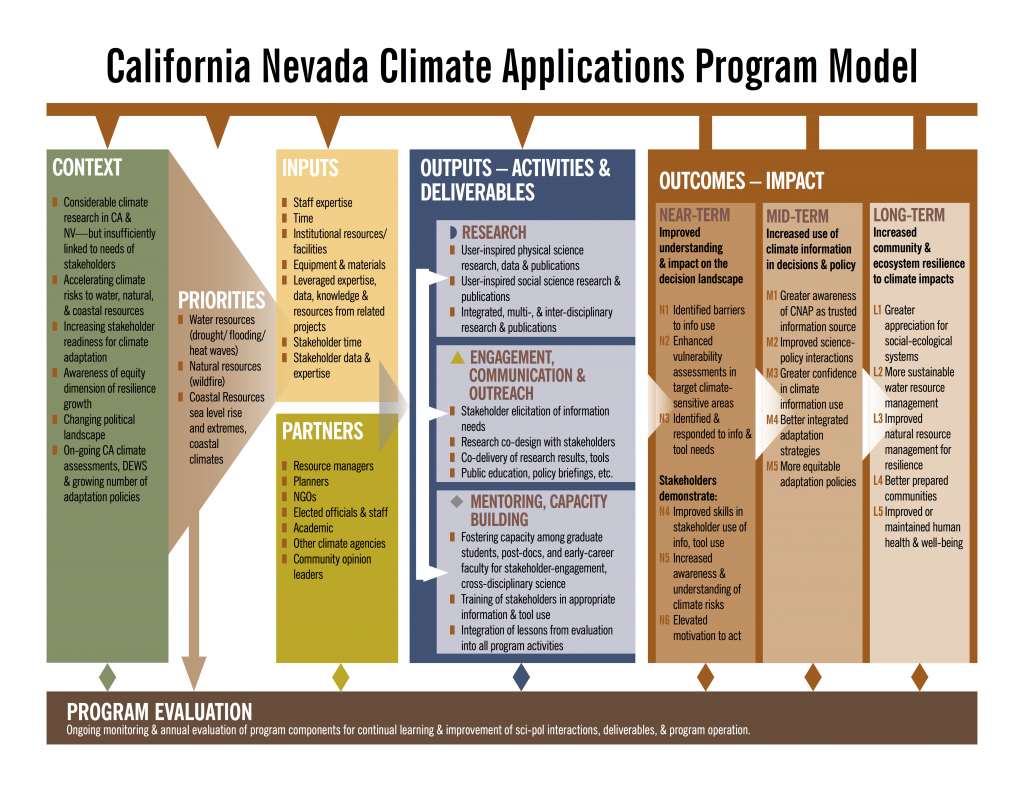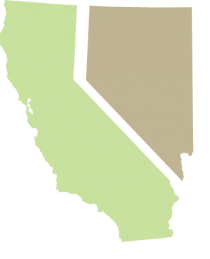MISSION: To improve resilience in California and Nevada by providing decision makers usable climate information through integrating cutting edge physical and social science.
CNAP, California Nevada Applications Program, has a long history of providing cutting-edge climate science to stakeholders in the region.The program began with an emphasis on California issues in 1999 as the California Applications Program (CAP). In 2011 the team expanded its geographic scope to include Nevada and became CNAP.
CNAP’s core priority sectors include understanding effects of climate variation on water resources, natural resources and coastal resources (Figure 1), along other linked systems including societal components.
Since 2005, CNAP has worked closely with the California Energy Commission (CEC) and other State Agencies in taking a leading role in the first three California Climate Change Vulnerability and Adaptation Assessments, and is currently completing the Fourth California Climate Change Assessment. CNAP has also collaborated with California Department of Water Resources (DWR) in providing data, observations and interpretation to better anticipate how climate and associated weather events affect water resources and water hazards in the State.
CNAP, working with California agencies including DWR, CEC and the California Ocean Protection Council, has contributed to a better understanding of climate impacts on the California coast, including the occurrence of coastal storms and two iterations of Sea Level Rise Guidance to State Agencies. Another focus of CNAP is working with fire agencies in California, Nevada and across the western U.S. to investigate effects of climate and weather on wildfire, with important contributions in understanding the strong influence of climate fluctuations upon the regionally varying wildfire patterns, differences in climatic influences across different types of landscape and vegetation, and changes over recent decades towards a more active wildfire regime, with projections of possible enhanced wildfire threat in future decades.
Additionally, CNAP has put new focus on the institutional knowledge in the wildfire community, working with fire fighters to better understand how climate information has and could play into planning and decision making. With increased emphasis on Nevada climate issues, CNAP has worked with Great Basin tribes to understand barriers to climate data and helped develop a resilience plan with Washoe County. More recently CNAP is working with Southern Nevada Water Authority to better understand how climate variation drives changes in water demand in their Clark County service territory. CNAP is also working with the Bureau of Land Management (BLM), and local National Weather Service offices on climate related projects, and CNAP researchers recently teamed with the Science Climate Alliance – South Coast to develop a comprehensive study of the vulnerability of San Diego County ecosystems to climate influences.
Since the inception of the California Nevada Drought Early Warning System (CA/NV DEWS) CNAP has partnered closely with the National Integrated Drought Information System (NIDIS) to coordinate communication and to research topics surrounding drought and water resources.


